Life and Nature Around Gokyo Valley: Exploring the Wild Side of the Himalayas
Nepal’s majestic Himalayas is perhaps one of the most beautiful places in the world, Gokyo Valley. With bright blue lakes, high peaks, and stunning ice fields. Gokyo is also home to wildlife, plants, and their own mountain ecosystems that are specially adapted to endure one of the world’s toughest environments.
However, Gokyo’s bluish lakes and stunning support are so much more than simply visual beauty. These lakes burst with life birds fly overhead, yaks graze in alpine meadows, and snow leopards hang out on the rocky slopes. Nature here balances biological life with height, climate, and people’s relationships to wildlife over time as a living ecology.
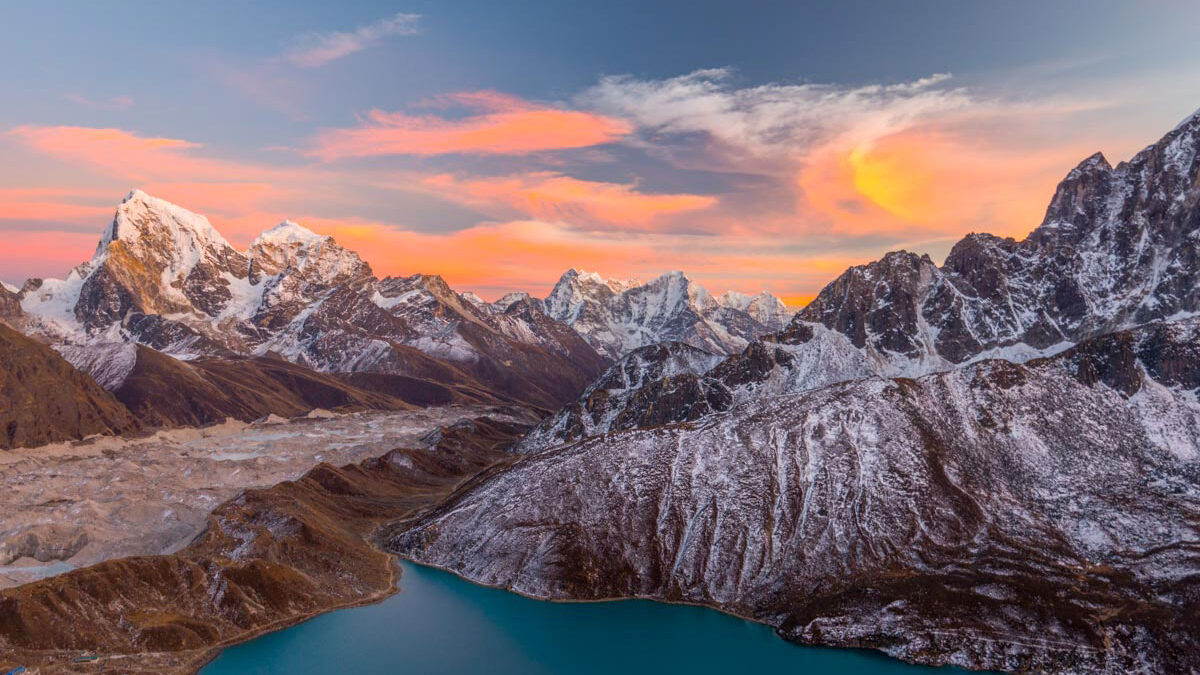
In this blog we will see the wildlife, their habits, plants, and ecological processes in Gokyo valley. You will see how the environment is one of the unique and spectacular natural areas of Nepal.
1. The Nature Wonder in Khumbu, Gokyo Valley
Gokyo Valley is located inside Sagarmatha National Park, which was established in 1976 as a World Heritage site to preserve the fragile ecology of the Himalayas. The valley lies in the Solukhumbu District of northeastern Nepal. Extending from Namche Bazaar to Gokyo Village at 4,790 meters and further up to Gokyo Ri at 5,357 meters and the Ngozumpa Glacier, the longest glacier in the Himalayas.
Gokyo is primarily known for a chain of six glacial lakes reputed to be the highest freshwater lake system in the world. These lakes are not only beautiful but also help in maintaining a range of flora and fauna unique to cold, thin-air environments. The pristine ecosystem around these lakes plays an important role in maintaining biodiversity in this region and regulating hydrology.
2. The Himalayan Landscape: From Forests to Glaciers
The Gokyo Valley is a living classroom of nature, offering an incredible range of ecological zones within a relatively short vertical distance. Trekkers ascend from Lukla-2,860 m to Gokyo across a series of changing habitats, from lush forest to alpine tundra to icy moraines.
a. Lower Forest Zone (2,800 – 3,500 m)
The lower parts of the valley, around Lukla and Namche Bazaar. It has a cool and moist climate where there are well-developed, dense forests. Dominant species in this zone include rhododendron, pine, fir, and birch. In spring-between March and May-forests of rhododendron bloom into color, painting the hillsides in shades of pink, red, and white. This spectacular bloom brings in nectar-feeding birds and is one of the sights while trekking in Nepal.
b. Subalpine Zone (3,500 – 4,200 m)
It opens up as one goes upwards, with shrubs giving place to juniper bushes along the route to Dole and Machhermo. Growth is relatively sparse here, though hardy plants like dwarf rhododendron and barberry mark these dry stretches. It is also a prime grazing land for yaks, which feed on alpine grasses and ensure a good livelihood for the locals, who are Sherpas.
c. Alpine Zone (Above 4,200 m)
Beyond Machhermo, trees all but disappear, replaced by mosses, lichens, and cushion plants clasping to rocks and glacial soils. The air is thinner, the temperature lower, and the wind stronger-yet life persists. This apparently barren terrain supports snow leopard, Himalayan tahr, and small rodents adapted to the cold.
3. Wildlife Around Gokyo Valley
Though Gokyo Valley has difficult conditions,we will be able to see and find animals more than we could think. From the largest terrestrial mammals to the small-to-large vibrant birds, Gokyo and its surrounding area have emphasized the biodiversity of the valleys with extreme elevation and seasonal variability over millions of years.
A. Mammals of Gokyo Valley
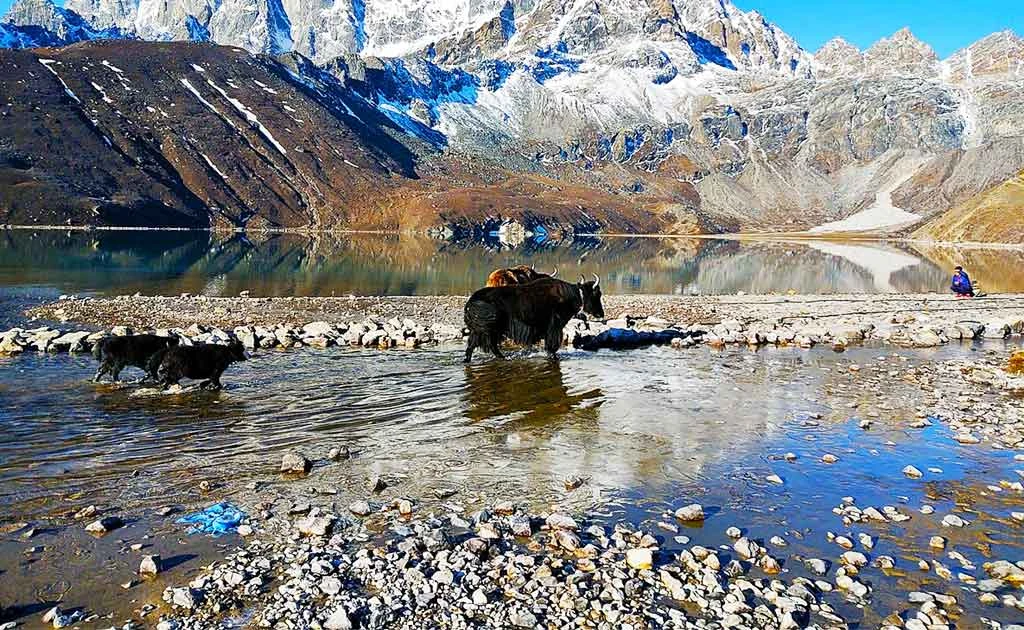
a. Snow Leopard (Panthera uncia)
The snow leopard is the most beautiful and iconic predator found in the Himalayas and stealthily uses steep cliffs and rocky ridges above 3500 meters. They are seldom encountered by trekkers, however they leave evidence of their presence in the form of tracks, scat, and/or cache of prey remains in areas around Gokyo and the Cho La Pass. The snow leopard is primarily a predator of Himalayan tahr, musk deer, and blue sheep.
b. Himalayan Tahr (Hemitragus jemlahicus)
The Himalayan tahr is a close relative of the wild goat and is very commonly seen feeding on steep rocky slopes of Gokyo Valley. Males are identified as some of the most conspicuous fauna of the region due to their long thick fur coat and curved horns. Tahr are an important part of the alpine ecosystem both as a grazer and continue to be part of the diet of larger predators of the region.
C. Musk Deer (Moschus chrysogaster)
The musk deer which is located in wooded areas around Dole and Phortse, is hunted for its musk gland, and as a result, becomes vulnerable for poachers. This shy animal is found alone, and it eats leaves, grasses and lichens. In Sagarmatha National Park, where some conservation measures have recently been put in place, the musk deer is beginning to increase in numbers.
d. Himalayan Marmot (Marmota himalayana)
These adequately-sized, social rodents inhabit burrows they build themselves and can be seen nearby Machhermo and Gokyo. Marmots are diurnal, which means that they search for food and sunbathe on rocks during the day, and sleep all night in burrows to escape low night temperatures. In the winter would-be months, marmots will hibernate for weeks to adjust to lower temperatures.
Yak and Nak (Female Yak)
Domesticated yaks are very significant in Sherpa life, as they provide milk, meat, wool and transportation. Wild yaks can be seen regularly in secluded spots near Gokyo Ri and Cho Oyu. Yaks are built for the thin air and cold environment and exemplify toughness in what we perceive to be cold conditions in the vast, inhospitable Himalayas.
B. Birdlife Around Gokyo Lake
The Gokyo Valley is a cozy, ideal location to view birds during the spring and autumn migratory seasons. Not only are there business card styles everywhere, Sagarmatha National Park is also home to over 120 birds. Some birds are from the alpine trilogy; others are only present for brief visits.

Himalayan Monal (Danphe)
The Himalayan Monal, also Nepal’s national bird. It is a stunning pheasant because of its collection that has such vivid feather colors shining in the sun. The males are quite stunning in particular, showing off bright blue, green, and copper colors on the fore. You can almost always find Himalayan Monals around forests a few minutes from Dole and Machhermo.
Snow Pigeon
The peaceful gray and white pigeon is typically found in monasteries or rocky cliffs and is omnivorous, eating grasses, flowers, and small seeds. They now have even been observed much higher than 4000 m.
Yellow-Billed Cough:
These interesting black birds, identifiable by their bright yellow bills, will be seen flying about Gokyo Village and above you on the adjacent hills and ridges. These birds are mostly curious and social, and will almost follow you going up, while they wait for you to inadvertently drop some type of food.
Grandala and Blue-Fronted Redstart:
In these colorful birds, you will encounter small patches of blue and orange among the gray side of the Himalayan hillside, where they are feeding casually on insects and berries from the rocks and bushes bordering the lakes.
Ruddy Shelduck and Migratory Ducks:
The Gokyo lakes provide a refreshing breeding/fallout zone for migratory waterfowl (e.g., ruddy shelducks, bar headed geese, or common coots) from Tibet and central Asia that summer on the lakes. The Gokyo Lakes is positioned as the main breeding zone for these waterfowl (or the waterfowl will) spring and summer months build and use small adaptable islands climbing on and using the islands along the escape route, and opportunistic species usually the only true structure for other species along the way with gaps in habitats and distance in retention of diet among the birds.
4. Flora and Vegetation Around Gokyo
When I saw the varieties of plants, i couldnt believe my eyes. You will be amazed. You will find a diversity of plant growth on the slopes. Vegetation grows rapidly and vigorously, however, it changes substantially with elevation, temperature, and moisture. The conditions create many microhabitats.
1.Forests and Shrubs
In lower elevations, the forests are primarily composed of rhododendron (Nepal’s national flower), juniper, birch, and pine trees. These trees provide refuge for musk deer and nesting sites for multiple bird species including cuckoos and ashy-throated warblers. The rhododendron, particularly, is stunning in the spring and the meadows around the rhododendron make for the best trails of the entire trek as they look like natural gardens.
2.Alpine Meadows
Once you surpass the 4,000 meter elevation range, you will find meadows where blue poppies, edelweiss, and primulas thrive as a results of the short, summer season. These intense plants have deftly adapted to strong ultraviolet radiation and very cool nights while exposed to wind everything is happening all at once.
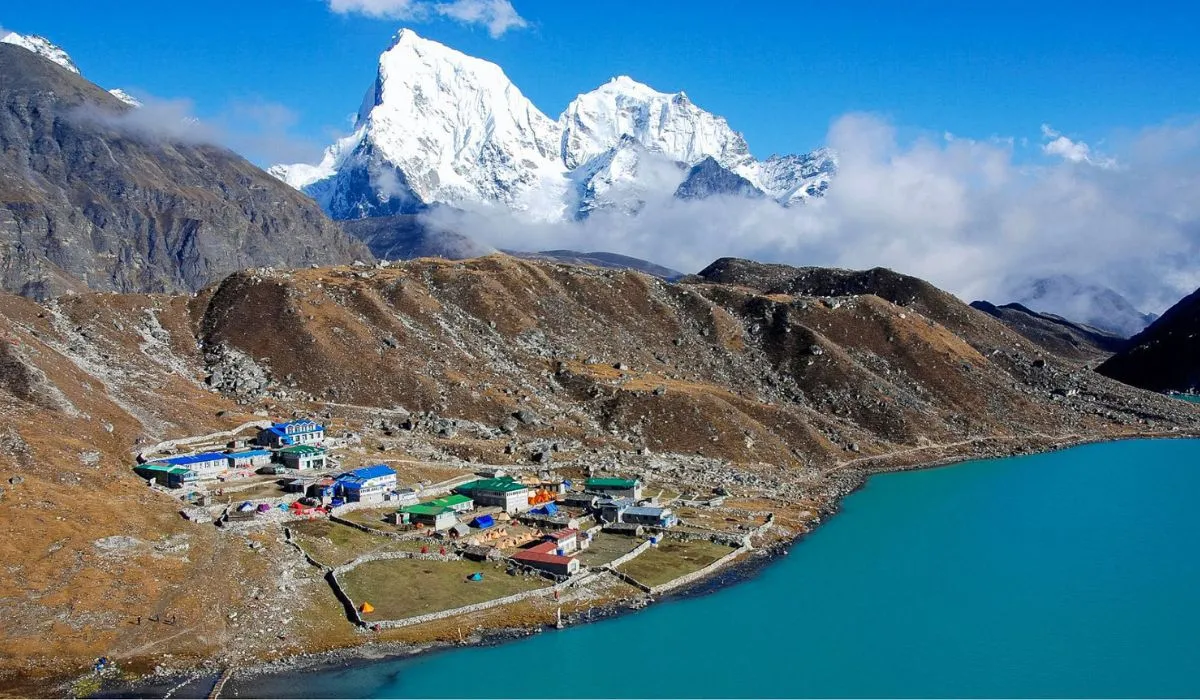
3. Medicinal Plants
The Khumbu region also has medicinals with a strong traditional Himalayan medical base (Amchi) including; jatamansi, rhododendron anthopogon, and Artemisia being three examples of higher prescriptions of herbs with considerable known medicinal potential who also have sustainable resource harvest techniques as practiced by the local people.
4. Glacial Flora
Close to Gokyo and the Ngozumpa Glacier, hardiness plants (mosses, lichens, and saxifrages) can growing upon bare rock. These plants are Pioneer species – over the decades and even centuries they will transform rock into a soil profile which will support plant life in future years.
5. The Role of Lakes and Glaciers in the Ecosystem
Wow, the six lakes of Gokyo, including Thonak Cho, Gokyo Cho and Gyazumpa Cho, are not just aesthetically beautiful, they form an incredible ecosystem of high-elevation wetlands, being fed by glacial melt-water from Cho Oyu (8,188 m) and surrounding peaks.
The lakes contain some rare fish species and are host to migratory birds. They also serve in regulating the flow of water into the Dudh Koshi River system, contributing to sustain local communities and agriculture downstream.
Alongside is the Ngozumpa Glacier, itself over 36 kilometers long; which is also the largest glacier in the Himalayas. The glacier serves as a water reservoir, as well as an indicator of climate change.
The alterations in glacier size and melting rates offer valuable insights on climate change and implications for Himalayan ecosystems.
6. Co-existence with Nature
The Sherpa people have existed for numerous generations in harmony with nature. Their traditional beliefs melded with Buddhism and animism perceive strong connections to the mountains, lakes, and animals. Cutting trees in sacred places, or killing animals, is unacceptable for Sherpa people.
Many local customs protect environmental practices. For example:
- Yak grazing is rotated so that pastures are not overgrazed.
- Monasteries and local governing bodies (gombas) monitor conservation efforts.
- Tourist guesthouses operate as eco-tourism businesses that use solar energy and also prevent and monitor waste disposal.
- The Sherpa Mayelubu philosophy “respect for all living beings” is one of the bases for sustainability and principles for the Gokyo area.
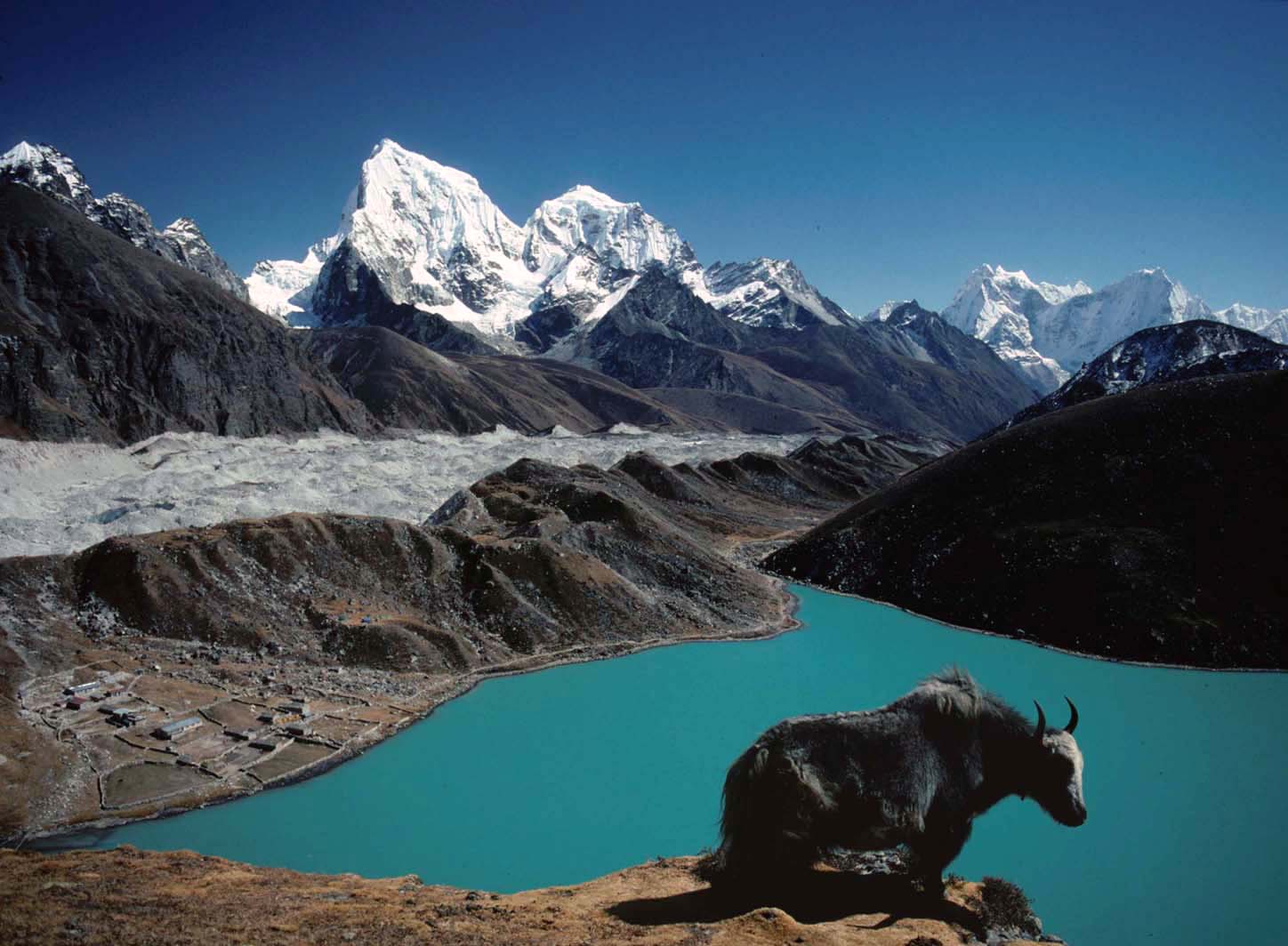
7. Conservation Efforts and Challenges
The Gokyo ecosystem is dependent on Sagarmatha National Park for its resiliency, but several factors pose challenges to that resiliency. One of the greatest challenge is climate change, which is causing glaciers to melt faster than they ever have in history and destabilizing lakes, leading to uncertainties around water supply in the region. Climate change also compounds the pressures of tourism, which leads to excessive waste, energy demands of remote mountain communities. And the loss of wildlife habitat as trails are changed and buildings constructed.
Fortunately, there are organizations working to challenge these pressures, including the Sagarmatha Pollution Control Committee (SPCC), and Sherpa cooperatives that are community owned and operated. These organizations oversee activities such as:
- Waste management and recycling;
- Awareness-raising activities around quality guiding for trekkers;
- Reforestation and restricting grazing.
When you visit we can all support these organizations by following Leave No Trace (LNT) principles, reducing single use plastic, and complying with tradition.
8) When to Visit Gokyo for wildlife and nature
The best time of year to see the incredible wildlife, and amazing views of the Gokyo Valley are in the spring (March – May), and fall (September – November).
Spring: The woods are full of floral rhododendrons and wildlife is coming alive after the winter. Birdwatching is at its prime during this seasonal shift.
Autumn: The weather this season can fluctuate from clear to fairly clear skies and stable. The mountains can be beautiful, migratory birds have returned to the lakes, while the herders are busy preparing for winter.
Winter (Dec–Feb): The region is snow, as many animals migrate or hibernate, but there is a quiet, frozen beauty for competent trekkers.
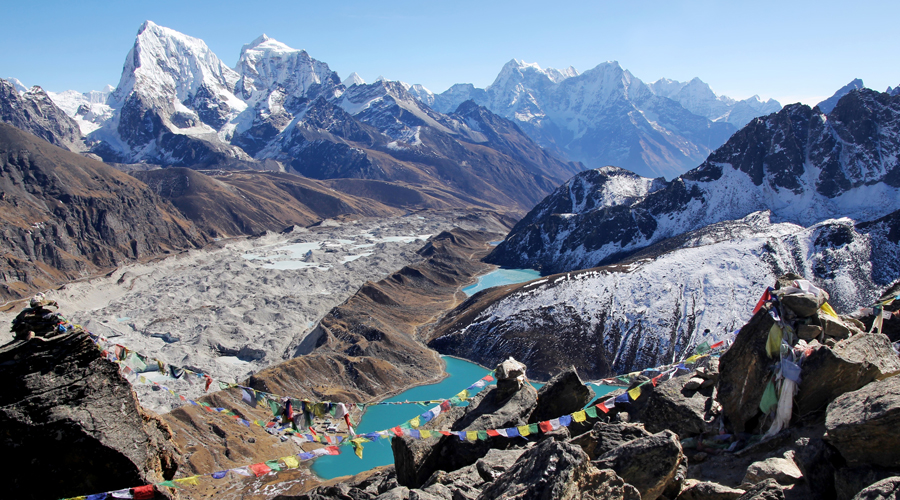
9. Eco-Friendly Trekking Tips for Gokyo Valley
If you would like to enjoy and protect the pristine environment and wildlife of Gokyo, please consider these eco-friendly trekking tips:
- Stay on built trails to limit erosion and the removal of vegetation.
- Bring your own reusable bottles and utensils, and avoid using plastic in the wilderness.
- Do not engage wildlife and do not feed birds and other wildlife.
- Honor the sacred sites adjacent to lakes and religious sites.
- Support locally owned eco-lodges and local residents capable of serving. As guides who have undergone training and education in sustainable tourism.
Conclusion
Gokyo Valley is more than simply a trek, it is a journey through one of the world’s most beautiful ecosystems. The unblemished lakes, steep mountains, and the wildlife which survives among it is a reminder of nature’s power and its fragility.
Life persists here on the edge – but it thrives here as well, in balance between humans and nature. The Sherpa culture, yaks, and snow leopards and alpine flowers. All coexist together as the natural world appropriately maintains itself beneath towering peaks.
To walk through Gokyo is to experience life in the clouds – pure, powerful – and incredibly beautiful.
